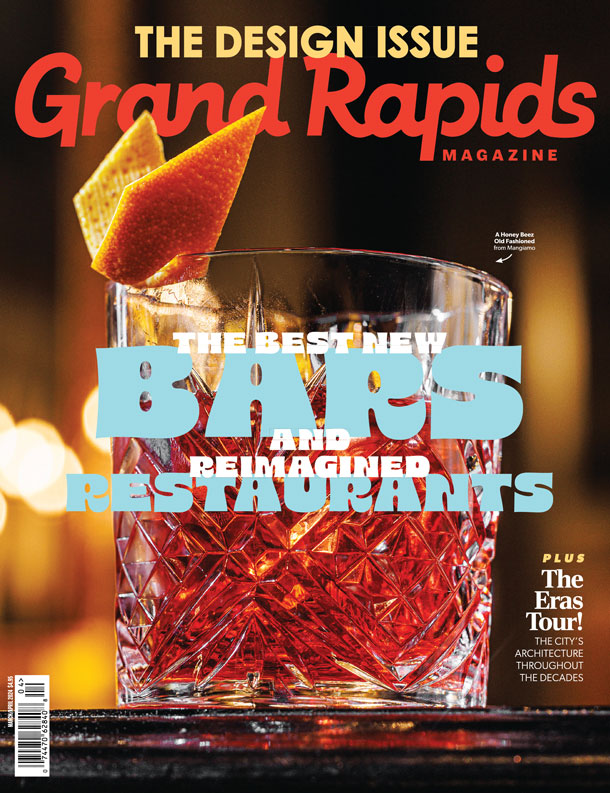
January and February 2020 appeared to set a great trajectory for tourism growth in West Michigan.
Experience Grand Rapids was celebrating 10 consecutive years of increased tourism in the community, and it looked like 2020 would be more of the same. But then the world shut down as the COVID-19 pandemic ripped across the globe.
“January and February were better than normal, and then the floor fell out,” said Doug Small, president and CEO of Experience Grand Rapids, West Michigan’s convention and tourism organization. “We were expecting to have an 11th-straight record year of hotel room revenue.”
Small said the organization no longer focuses so much on room occupancy, but the numbers were startling. Downtown hotels, which were running at about 72% occupancy right before the pandemic, plummeted to less than 10% full for several months in the depths of 2020. The organization had a budget of $11.7 million for the year and Small was forced to make as many cuts as possible as Experience Grand Rapids lost approximately 50% of its revenue. That meant permanently letting go of 13 dedicated staff members.
“That day was the toughest of my career and I’ve been through a lot in my 39 years in the tourism industry,” said Small, who worked in the hospitality field during the 2001 terrorist attacks, and also suffered through multiple recessions. “We couldn’t keep everybody. But there wasn’t enough to do, even though we wouldn’t let the brand die. We had to keep it alive.”
The rest of 2020 was difficult as Experience Grand Rapids shifted its marketing tactics for the region. Small said the organization still pushed the Grand Rapids tourism campaign nationally, but rather than “Visit now,” it was “When the time is right, we’re here for you.”
It wasn’t until last March that signs of life started to emerge in the industry.
“In the second quarter, I’d get my weekly reports seeing occupancy numbers increase and really started to see a ray of light in the summer months, where we were using occupancy (totals) that were similar to and better than 2019,” he said.
Part of that was attributable to the West Michigan Sports Commission, which still was able to host tournaments that brought athletes and families to town. It also had a lot do with people saying, “I’ve had it, I need to get out,” Small said.
But sports events and transient weekends aren’t enough to push West Michigan tourism back to 2019 levels. The region lost more than 500 groups that were scheduled to come to Grand Rapids during the pandemic, resulting in the loss of more than $230 million in direct spending in the community, Small said.
“It’s very devastating,” he said.
Experience Grand Rapids staff were able to reschedule approximately 80 of those groups to a different year.
Small serves on the board of the United States Travel Association, which has predicted a full recovery to pre-pandemic levels in 2024. Small, on the other hand, believes West Michigan can get back to pre-pandemic levels before the end of 2023.
Some of that will be challenged by many businesses greatly reducing their corporate travel allowances and budgets.
“We’ll have to make that business up with more leisure business and group business,” Small said. With that caveat, however, Small, who also serves on the Gerald R. Ford International Airport board, said the airport staff is fairly bullish on the return of corporate travel.
Group business is still light, as Small said it was approximately 55% of its normal rate. A group that met in October had attendance about 75% of its pre-pandemic levels. As Small said, “That’s better than 50%.”
In 2022, Small said there already are 120 groups scheduled to meet in West Michigan, a number that’s getting back to “normal” figures for the region.
“Our group business is looking pretty solid, barring any other variant that pops up and throws everything for a loop again,” Small said. “In 2022, we’re not going to be at 2019 numbers, but that’s why I feel by 2023, we’re getting back to close to normal.”
Just looking at the hotel occupancy and room revenue from 2020 to 2021, there’s already a major upswing that is cause for plenty of optimism. In September 2020, hotel occupancy settled in at 40%.
In September 2021, occupancy in Kent County hotels hit 59%. That 19-point swing was enough for Small to call it “huge.” Even more significant, revenue jumped 105% year-over-year.
That revenue is even more cause for excitement. As Small mentioned, the organization no longer is too concerned with room occupancy. Instead, he likes to see the upward trend in hotel room rates, which he said now are as good as they were in 2019.
Part of that is hotels, like much of the rest of the nation’s industries, are struggling with staffing. Hotels might not even want full occupancy as they risk under-servicing guests and potentially killing future business. With fewer rooms open because of staffing issues, the supply-demand curve allows hotels to keep prices up.
It’s that workforce issue, however, that concerns Small moving forward. He said he was heartbroken seeing his friends in the hospitality industry, including many of the city’s restaurants, struggle throughout the pandemic. Now, they’re still struggling as many continue to fight to fill up their staffs.
Small said Experience Grand Rapids helped host a job fair for the region’s travel and hospitality companies. There were more than 1,000 positions available for job-seekers who came ready to work.
Seventy people showed up.
“The biggest challenge is workforce,” Small said. “It was already starting to see a struggle before the pandemic. Now, it’s devastating.”
This story can be found in the January/February 2022 issue of Grand Rapids Magazine. To get more stories like this delivered to your mailbox, subscribe here.








Facebook Comments